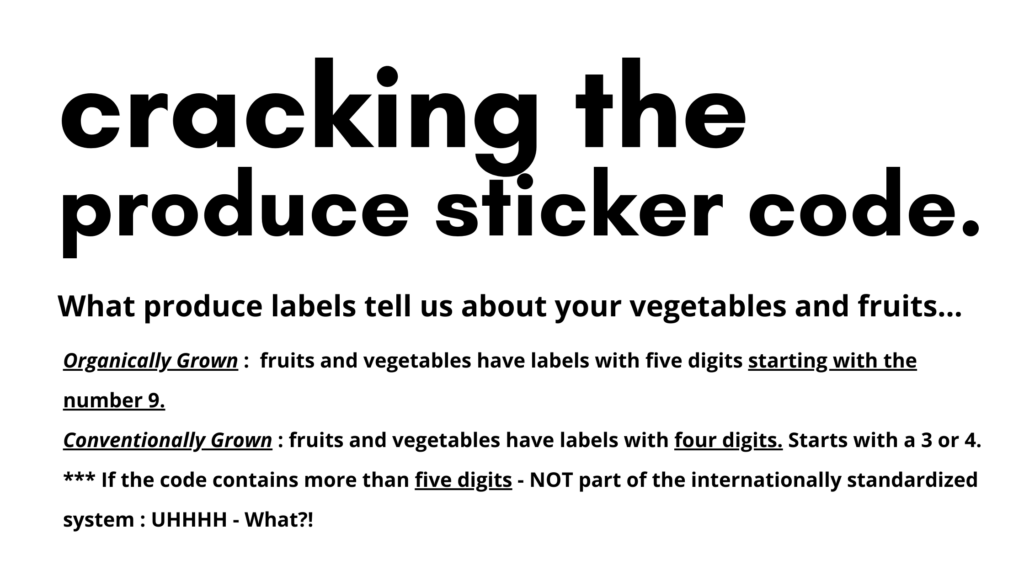
PLU codes have been used by supermarkets since 1990 to help checkers identify fruits and vegetables so they can charge the correct price and maintain better inventory control. But the sticker is not just for checkout.
The four or five-digit numbers identify the produce, indicating size, growing method, type of food (apple or orange for instance) and variety (such as a Honeycrisp or Golden Delicious apple).
The voluntary labels tell you whether you are purchasing organic or conventionally grown produce.
Organic vs. Conventional, what’s the difference?
Organically grown means natural fertilizers were used instead of synthetic chemicals.
Organic farming uses compost and manure instead of chemical fertilizers. It uses insects and birds, and/or traps instead of synthetic pesticides. Crop rotation, mulching and hand weeding replace synthetic herbicides. Organic produce is usually grown without genetic engineering or modification.
Conventionally grown means synthetic fertilizers and pesticides were used to promote growth and prevent disease.
// Food labels can tell you a lot about what you’re eating and help you make well-informed food choices for you and your family.
What is GMO?
Genetically modified organisms or GMO produce are in a different category than organic and conventional produce. They’ve been the source of debate since they were introduced in the 1990s.
GMO foods are genetically engineered in a lab to have certain characteristics. This may include resistance to certain pests and molds, a different color than the original plant, faster growing times, larger fruit or even have higher values of certain vitamins. Many GMO crops grown in the United States are genetically engineered to be resistant to chemical pesticides.
GMO fruits and vegetables were once assigned a five-digit PLU code number that started with the number 8. But the 8 prefix was dropped in 2015 as the GMO designation, and it was never used in retail. The International Federation for Produce Standards (IFPS), which assigns the voluntary PLU codes, says it plans to use the 8 prefix in the future for non-GMO produce.
// The more transparency we have in food labels the better.
* Thank you Scripps for some tips on this topic!
